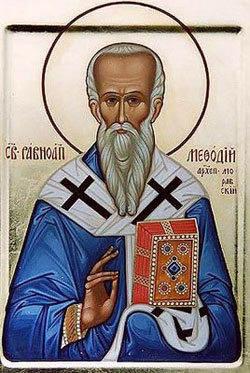We ask you, urgently: don't scroll past this
Dear readers, Catholic Online was de-platformed by Shopify for our pro-life beliefs. They shut down our Catholic Online, Catholic Online School, Prayer Candles, and Catholic Online Learning Resources essential faith tools serving over 1.4 million students and millions of families worldwide. Our founders, now in their 70's, just gave their entire life savings to protect this mission. But fewer than 2% of readers donate. If everyone gave just $5, the cost of a coffee, we could rebuild stronger and keep Catholic education free for all. Stand with us in faith. Thank you.Help Now >
Form
FREE Catholic Classes
(Latin forma; Greek eidos, morphe, he kata ton logon ousia, to ti en einai : Aristotle)
The original meaning of the term form , both in Greek and Latin, was and is that in common use — eidos (derived from eido , root rid , an obsolete form from which comes the second aorist eidon , I see , akin to Latin video ), being translated, that which is seen, shape, etc., with secondary meanings derived from this, as form, sort, particular, kind, nature. It is also used by Plato to express kind, both as genus and species. From the primary and common signification given above, an easy transition is made to that in which it comes to signify the intrinsic determinant of quantity, from which figure or shape results, and thence to the further peripatetic and scholastic usage as the intrinsic determinant of anything that is determinable. Thus the term is employed even in such expressions as "form of contract ", "form of worship", and as theological form, "form of words" (the theological statement of dogmatic truth ); sacramental form (see below). In its more strict philosophical usage, however, it is limited to its signification of the intrinsic principle of existence in any determinate essence. This covers form, whether accidental or substantial. But there is a further extended use of the term form, derived from the fact that in all its previous significations it stands for the intrinsic constitutive element of the species, accidental or substantial, in sensible entities. Hence, all species or nature, whether in itself material or existent as immaterial, is called a form, though not, in the strict meaning of the term, a formal principle. In this manner, it is not unusual to speak of the angelic form, or even of the form of God, as signifying the nature, or essence, of the angel or of God. Hence, form is sometimes also used as a synonym of essence and nature. Thus also the form, or formal cause of Aristotle's theory of causality, is identified with the essence ( to ti en einai ), as the form is that in virtue of which the essence, even of material and composite entities, is precisely what it is. This point will be further considered in the paragraph treating of the development of the idea of form.
The various kinds of form recognized in philosophy include the following, of which brief definitions are given. Substantial form, in material entities, is that which determines or actuates materia prima (see MATTER) to a specific substantial nature or essence, as the form of hydrogen, a rose, horse, or man. It is defined by Aristotle as the first entelechy of a physical body (De Anima, II, i), and may be of such a nature that it is merely the determinant of matter (corporeal substantial form), or it may exceed, as it were, the potentiality of the determined matter (spiritual or subsistent form). Accidental form is that which determines a substance to one or other of the accidental modes as quantified, qualified, relationed, etc. (see CATEGORY). As the existence of an "accident" is a secondary one, consisting in an inexistence of inherence, an existent substance, as subject of inherence, is always connoted. A separated form is one which exists apart from the matter it actuates. No accidental form can thus exist, nor can corporeal substantial forms. The separated form is that of man — the human soul. Inherent form is an accidental form modifying or determining substance. The term is employed to emphasize the distinction of accidental from substantial forms. These latter do not inhere in matter, but are co-principles with it in the constitution of material substances. Forms of knowledge, according to Kant, are forms of;
- (1) intuition (space and time ), and
- (2) thought (the twelve categories in which all judgments are conditioned: unity, plurality, totality; reality, negation, limitation; substantiality, causality, relation; possibility, existence, necessity ).
They are all a priori and under them, as content, fall all our intuitions and judgments. The logical system of Kant is generally known as "formal" logic, from this connexion. So also that of Herbart, whose logical treatment of thought consists in the isolation of the content from its psychological and metaphysical implications. The point is related to the whole subject of epistemology. The attempt to ascertain the nature, extent, and validity of knowledge was made by Kant through a criticism, not of the content of thought, but of its essence. It is an endeavour to examine not the "facta of reason, but reason itself. . . .".
The development of the philosophical doctrine of form may be said to have begun with Aristotle. It provided a something fixed and immutable amidst what appears to be involved in a series of perpetual changes, thus obviating the difficulty of the Heraclitean position as to the validity of knowledge. The panta chorei destroys the possibility of a true knowledge of things as they are. Thus Aristotle may be looked upon as the one above all others who laid a solid base for any true system of epistemology. Like Plato, he saw the radical scepticism implied in an assertion of unending change. But unlike the doctrine of the former, providing unalterable but separated ideas as the ideal counterpart of sensible things, that of Aristotle, by its distinction of matter and form, makes it possible to abstract the unalterable and eternal from its concrete and mutable manifestation in individuals. Aristotle, however, identifies the form with the essence ; and this because the substance is what it is (essentially) by reason of the substantial form. It would be a mistake, none the less, to suppose that his doctrine leaves no room for a distinction between the two. Indeed Grote clearly shows that "the Aristotelean analysis thus brings out, in regard to each individual substance (or hoc aliquid , to use his phrase), a triple point of view:
- the form;
- the matter;
- the compound or aggregate of the two;
In other words the inseparable Ens which carries us out of the domain of logic or abstraction into that of the concrete or reality" (Grote, "Aristotle", ed. Bain and Robertson, II, 182). The theory is a fundamental one in Aristotle's "Phiosophia Prima", presenting, as it does, a phase, and that perhaps the most important, of the distinction between the potential and the actual. It is no less fundamental to the philosophical and theological system of St. Thomas Aquinas which is representative of the Christian School. Substantial form is an act, the principle of activity, and by it things actually exist (Summa I, Q. lxvi) as they are. Moreover it is one. Thus man exists as man in virtue of his substantial form, the soul.
That the rational soul is the unique form of the body is of faith (Council of Vienne; V Lateran; Brief of Pius IX , 15 June, 1857). Man is learned or healthy in virtue of the accidental (qualifying) forms of learning or health that "inhere" in him. These, without detriment to his humanity, may be present or absent. Both kinds of form, it may be noted, though they specify their resultant essences, or quasi-essences, are individuated by the quantified matter in the one case, and the subject of inhesion in the other. Thus, while the accidental or substantial corporeal form falls back into mere potentiality when it does not actuate its subject, the incorporeal subsistent form of man, though continuing to exist when separated from the body, retains its habitude, or relationship, to the matter by which it was individuated. This doctrine is usual in the School, but it is interesting to observe that Scotus taught, in distinction to St. Thomas's doctrine of one substantial form, a plurality of form in individuals. Thus, e.g. while according to Aquinas man is all that he is substantially (corporeal, animal, rational, Socrates ) in virtue of his one soul, according to Scotus each determination (generic or specific) superadds a form. In this way, man would be corporeal in virtue of a corporeal form, animal in virtue of a superadded animal form, etc., until he became Socrates, in virtue of the ultimate personal form ( socrateitas ). Occam also distinguished between a rational and a sensitive soul in man, and taught that the latter was corruptible. The terminology of the Scholastic doctrine of form is employed by the Church in dogmatic definitions, such as that of the Council of Vienne cited above, and in her teaching with regard to the sacraments. Thus, while the matter of the sacrament of baptism, for example, is water; the sacramental form consists of the words ego te baptizo , etc., pronounced by the minister as he baptizes. The same terminology is adopted in the exposition of moral theology, as in the distinction of formal and material sin.
The principal alternative systems professing to give an account of corporeal substances are those of Descartes, Locke, Mill and Bain, the scientists (Atomists, etc.). Descartes places the essence of bodies in extension three dimensions, thus identifying quantified substance with quantity and in no way accounting for substantial differences. Each substance possesses a "pre-eminent attribute, which constitutes its nature and essence and to which all others relate; thus extension ", etc. To this Locke adds the qualities of the substance, making its essence consist of its primary qualities, or properties (extension, figure and mobility, divisibility and activity). Locke's doctrine, which seems to be the opinion of many contemporary men of science, labours under the same grave inconvenience as that of Descartes, as, by a hysteron-proteron , it accounts for the nature of a given substance by its accidents. Mill and Bain, considering substance from a psychological rather than an ontological viewpoint, define it by its relation to sense perception as an external and permanent possibility of our sensations. This view is not unlike that just alluded to, inasmuch as it expresses not the essence of bodies but at most their activity as permanently capable of evoking sensations in us. Akin to this is the doctrine of positivism, explaining the nature of "matter" as a series of sensations.
The topic of form is, as has been seen, closely connected with epistemology. As was said, a weapon for the defeat of scepticism and Heracliteanism was provided by Aristotle in his doctrine of forms and essences; Aquinas, also, would have our knowledge to be of the eternal essences, though derived by way of contemplation of contingent individuals. Kant, on the other hand, denies the possibility of such knowledge of the Thing-in-itself, and, establishing a set of mental forms (see above) into which our experience of concrete beings may be fitted, inaugurates an epistemology of the phenomenal. Hegel begins with the idea of pure being, identical, because of its entire lack of content, with nothing; and thence evolves, on idealistic lines, his theory of knowledge. The "realism" of Herbart is an attempt to reconcile the contradictions that arise in the formal conceptions presented in experience. His epistemological principle is, therefore, a critical and methodical transformation of such conceptions, issuing in the position that a multiplicity of simple, real essences exists, each possessing a single simple quality. Several of the modern systems (Pragmatism, Modernism, etc.), based directly and indirectly upon the teaching of Kant, assert a life-value or work-value to truth, inculcating an extreme relativity of knowledge and tending to pure subjectivism and solipsism. The scholastic theory of form is not that generally adopted by modern scientists, though it may noticed that it is not directly impugned by any scientific system. From Bacon on, empirical science has been progressive; and there is reason to believe that the theoretic science of today is in a state of transition in its attitude with regard to the constitution of "matter" (substance). The atomic and molecular theories, principally on account of the discovery of the radio-active substances and their properties, are being modified or abandoned (at any rate in so far as they were held to represent the real constitution of matter) in favour of the electronic, a theory not unlike that of the Jesuit Boscovich. In any case the former did not go farther than to provide a theoretic account of the construction of "matter", leaving the ultimate constitution of substance unexplained. At this point the theory of hylomorphism and the doctrine of substantial form would apply. For a critical examination of the Mechanicist position in this connexion the reader is referred to Nys's "Cosmologie". Furthermore, there is a noticeable reaction towards the scholastic position in recent biology, in which a growing school of neovitalism is making itself felt.
Join the Movement
When you sign up below, you don't just join an email list - you're joining an entire movement for Free world class Catholic education.
-

- Easter / Lent
- Ascension Day
- 7 Morning Prayers
- Mysteries of the Rosary
- Litany of the Bl. Virgin Mary
- Popular Saints
- Popular Prayers
- Female Saints
- Saint Feast Days by Month
- Stations of the Cross
- St. Francis of Assisi
- St. Michael the Archangel
- The Apostles' Creed
- Unfailing Prayer to St. Anthony
- Pray the Rosary
Catholic Online News Declares War on Lies – A 2,000-Year-Old Force for Truth Enters the Global News Arena
How to Build a Nuclear Bomb: Start to Strike
Saint Anthony of Padua: The Miracle-Worker Who Brings Us Back to Christ
Daily Catholic
 Daily Readings for Sunday, June 15, 2025
Daily Readings for Sunday, June 15, 2025 St. Germaine Cousin: Saint of the Day for Sunday, June 15, 2025
St. Germaine Cousin: Saint of the Day for Sunday, June 15, 2025 Prayer for God's Blessing of One's Daily Work: Prayer of the Day for Sunday, June 15, 2025
Prayer for God's Blessing of One's Daily Work: Prayer of the Day for Sunday, June 15, 2025 Daily Readings for Saturday, June 14, 2025
Daily Readings for Saturday, June 14, 2025 St. Methodius I: Saint of the Day for Saturday, June 14, 2025
St. Methodius I: Saint of the Day for Saturday, June 14, 2025- Prayer for America: Prayer of the Day for Saturday, June 14, 2025
![]()
Copyright 2025 Catholic Online. All materials contained on this site, whether written, audible or visual are the exclusive property of Catholic Online and are protected under U.S. and International copyright laws, © Copyright 2025 Catholic Online. Any unauthorized use, without prior written consent of Catholic Online is strictly forbidden and prohibited.
Catholic Online is a Project of Your Catholic Voice Foundation, a Not-for-Profit Corporation. Your Catholic Voice Foundation has been granted a recognition of tax exemption under Section 501(c)(3) of the Internal Revenue Code. Federal Tax Identification Number: 81-0596847. Your gift is tax-deductible as allowed by law.





 Daily Readings for Sunday, June 15, 2025
Daily Readings for Sunday, June 15, 2025 St. Germaine Cousin: Saint of the Day for Sunday, June 15, 2025
St. Germaine Cousin: Saint of the Day for Sunday, June 15, 2025 Prayer for God's Blessing of One's Daily Work: Prayer of the Day for Sunday, June 15, 2025
Prayer for God's Blessing of One's Daily Work: Prayer of the Day for Sunday, June 15, 2025 St. Methodius I: Saint of the Day for Saturday, June 14, 2025
St. Methodius I: Saint of the Day for Saturday, June 14, 2025

